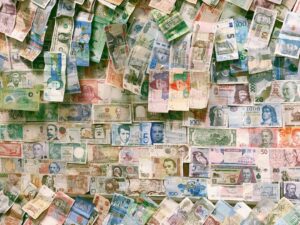Navigating the Forex Market in Singapore: A Beginner’s Guide
The foreign exchange market, commonly known as the forex market, is the largest and most liquid financial market globally. With a daily trading volume of over $6 trillion, it provides ample opportunities for traders to profit from currency fluctuations. If you’re a beginner looking to venture into forex trading in Singapore, this guide will help you navigate the market with confidence.
Understanding the Forex Market
The forex market is where currencies are bought and sold. It operates 24 hours a day, five days a week, across different time zones worldwide. Unlike the stock market, which is centralized, forex trading takes place over-the-counter (OTC) through a network of banks, financial institutions, and individual traders.
Major Currency Pairs
In forex trading, currencies are traded in pairs. The most actively traded currency pairs are known as the major pairs. These pairs include the US dollar (USD) and a currency from another major economy, such as the euro (EUR), British pound (GBP), Japanese yen (JPY), Swiss franc (CHF), or Australian dollar (AUD).
Choosing a Forex Broker
To participate in the forex market, you’ll need to open an account with a reputable forex broker. It’s crucial to choose a broker that is regulated by the Monetary Authority of Singapore (MAS) to ensure the safety of your funds and adherence to local regulations.
When selecting a forex broker, consider factors such as the broker’s trading platform, spreads, leverage options, customer support, and educational resources. A user-friendly platform with advanced charting tools can enhance your trading experience, while tight spreads and flexible leverage can influence your profitability.
Developing a Trading Strategy
Before diving into forex trading, it’s essential to develop a trading strategy. A trading strategy outlines your approach to entering and exiting trades, managing risk, and setting profit targets. It helps you make informed decisions based on technical analysis, fundamental analysis, or a combination of both.
Technical analysis involves analyzing historical price data and using indicators to predict future price movements. Fundamental analysis, on the other hand, focuses on economic indicators, news, and events that can impact currency values. It’s important to study and practice different strategies to find the one that suits your trading style and risk tolerance.
Risk Management
Managing risk is crucial in forex trading. You should never risk more than you can afford to lose. One common risk management technique is setting a stop-loss order, which automatically closes a trade if the market moves against you beyond a predetermined level.
Another risk management tool is position sizing. This involves determining the appropriate trade size based on your account balance and risk tolerance. Experts recommend risking only a small percentage of your trading capital per trade to protect yourself from significant losses.
Emotional Control
Emotions can play a significant role in forex trading. It’s important to approach trading with a calm and disciplined mindset. Greed and fear can lead to impulsive decisions and irrational trading behavior. Stick to your trading plan and avoid making impulsive trades based on emotions.
Educational Resources
Continuous learning is essential in forex trading. Take advantage of the educational resources provided by forex brokers, such as webinars, video tutorials, and market analysis. Stay updated with the latest news and developments that can impact currency markets.
Conclusion
Forex trading offers immense opportunities for profit, but it also carries risks. By understanding the basics of the forex market, choosing a reliable broker, developing a trading strategy, managing risk, and controlling your emotions, you can navigate the forex market in Singapore with confidence. Remember, successful trading requires time, practice, and a commitment to continuous learning.






